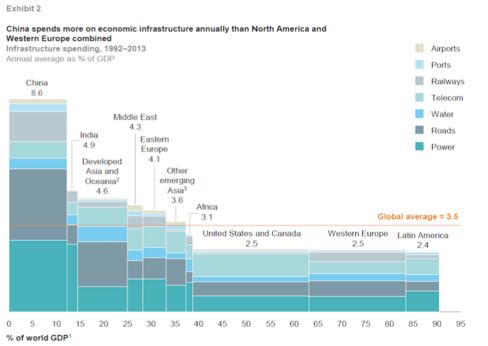Re: Yes Virginia...It's a Bubble...
Chinese behavior is very different from American behavior, even here in the U.S. I have never forgotten what I was warned as a child: Americans earn a dollar and spend a dollar (Americans seemed to earn a dollar and spend two dollars during the last two asset bubbles); Chinese people (referring to U.S. citizens of Chinese descent) earn a dollar and spend seventy-five cents. And despite the lesser spending, there is a reasonable amount of consumption; it is not as if every Chinese person in the U.S. is a variant of Ebenezer Scrooge.
The extra twenty-five cents (or more) that Americans spend is for things that I do not believe really help a productive economy: silly services (gym memberships that are never used, cable television, expensive phone plans, etc.), accumulation of goods to keep up with the Joneses, and interest on loans.
Medical care in China is also inexpensive so massive quantities of savings are not required except for serious illnesses such as cancer where treatments can run in to the millions of dollars. If the Chinese government cared about making those expensive treatments available to its citizens, it could always choose to violate IP laws and manufacture and sell the drugs at a nominal cost. Furthermore, traditional Chinese medicine is still in practice in China and some of it works while being inexpensive. This is an option that most Americans and Westerners do not consider. China's savings rate is not something that I believe would be destructive to GDP growth
If China can get out of the being the low cost manufacturer of junk (again, very tall order) and make decent inroads into moving up the value chain, resulting higher wages should juice GDP as Chinese will willingly spend more for certain things. GDP can further be boosted IF China is able to reduce the rampant corruption in its government and society. No, I'm not holding my breath.
My tack is that Shilling seems to have some sort of numerical limit for deciding that China's GDP has hit a plateau as Japan's did. However, Japan really didn't have anywhere else to go having reached the top tier of development. I remember reading an article some years ago of how what a nation exports is indicative of its economic development. At the highest level is culture, which Japan has done a reasonably good job of exporting. China really has not exported culture and they're not even on the second highest tier of economic development. I'm saying that numbers aside, there are qualitative things China can do to wring quite a bit more out of their GDP growth story. Whether they will attempt those things or succeed is a different story.
It's not guaranteed by a long shot that China's GDP growth flatlines as Japan's has for the past twenty years.
Originally posted by jk
View Post
The extra twenty-five cents (or more) that Americans spend is for things that I do not believe really help a productive economy: silly services (gym memberships that are never used, cable television, expensive phone plans, etc.), accumulation of goods to keep up with the Joneses, and interest on loans.
Medical care in China is also inexpensive so massive quantities of savings are not required except for serious illnesses such as cancer where treatments can run in to the millions of dollars. If the Chinese government cared about making those expensive treatments available to its citizens, it could always choose to violate IP laws and manufacture and sell the drugs at a nominal cost. Furthermore, traditional Chinese medicine is still in practice in China and some of it works while being inexpensive. This is an option that most Americans and Westerners do not consider. China's savings rate is not something that I believe would be destructive to GDP growth
If China can get out of the being the low cost manufacturer of junk (again, very tall order) and make decent inroads into moving up the value chain, resulting higher wages should juice GDP as Chinese will willingly spend more for certain things. GDP can further be boosted IF China is able to reduce the rampant corruption in its government and society. No, I'm not holding my breath.

My tack is that Shilling seems to have some sort of numerical limit for deciding that China's GDP has hit a plateau as Japan's did. However, Japan really didn't have anywhere else to go having reached the top tier of development. I remember reading an article some years ago of how what a nation exports is indicative of its economic development. At the highest level is culture, which Japan has done a reasonably good job of exporting. China really has not exported culture and they're not even on the second highest tier of economic development. I'm saying that numbers aside, there are qualitative things China can do to wring quite a bit more out of their GDP growth story. Whether they will attempt those things or succeed is a different story.
It's not guaranteed by a long shot that China's GDP growth flatlines as Japan's has for the past twenty years.


Comment